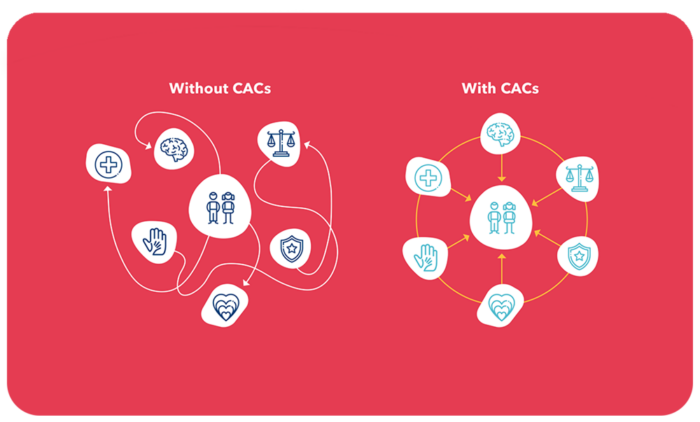To understand what a Children’s Advocacy Center (CAC) is, you first need to recognize what children face without one.
Before Children’s Advocacy Centers existed, a child could end up having to tell the worst story of his or her life repeatedly, to doctors, law enforcement officers, lawyers, therapists, investigators, judges, and others. They would have to talk about that traumatic experience in a police station where they think they might be in trouble, or they could be asked the wrong questions by well-meaning teachers or other adults, that could actually end up compromising the potential case against the abuser.
When law enforcement or the Department of Child Safety believe a child may be experiencing abuse, the child is brought to the Children’s Advocacy Center—a safe, trauma informed, child-focused environment—by a non-offending family member or caregiver.
The child will tell their story once to a trained forensic interviewer who knows the right questions to ask in a way that does not retraumatize the child. Then, a team that includes medical professionals, law enforcement, prosecution, Department of Child Safety, victim advocacy, and other professionals make decisions together about how to best help the child based on the interview. This is called the multidisciplinary team (MDT) response and is a core part of the work of the Children’s Advocacy Center.

The Children’s Advocacy Center serves a critical role in our community when it comes to keeping children safe.
The model used by the center has been proven effective through many studies. The use of the Child Advocacy Center approach leads to more timely investigations, faster filing of charges, and a dramatic increase in felony prosecution of child sexual abuse, with a 196% greater rate of conviction.
